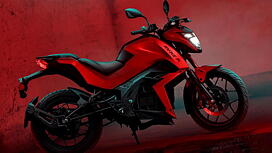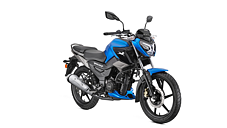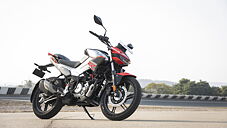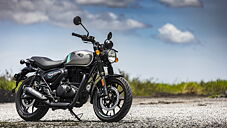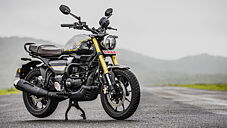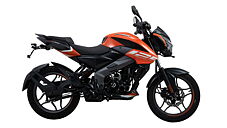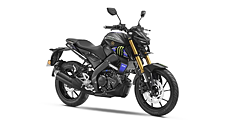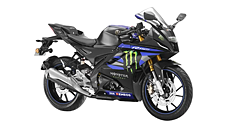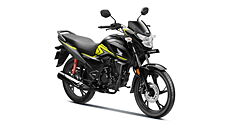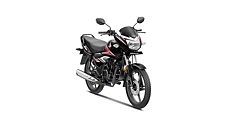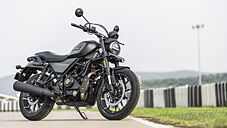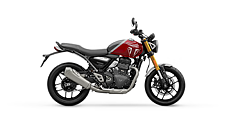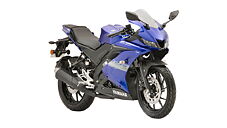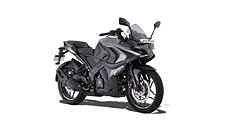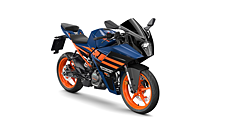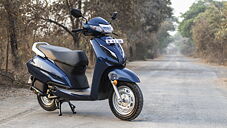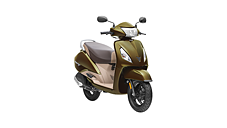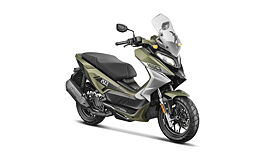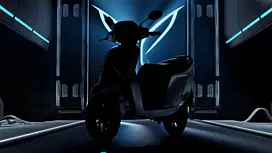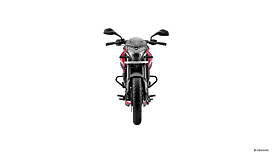Introduction

Tork Motors isn’t a new name in the world of electric vehicles. It is one of the early companies that saw the green mobility vision and jumped on it. It made some e-bikes that raced at the Isle of Man and took the podium. It then made some more, which didn’t hit the racetracks. Nonetheless, Tork Motors continued to find ways to innovate and develop green vehicles. Its biggest project was the T6X –an electric motorcycle, which was supposed to be launched years ago. But development demanded time and now finally, there’s a production-ready model but with a new name – the Kratos R. Tork likes to call it India’s first ‘Made in India’ electric motorcycle and I don’t think they are lying.
Why to buy it?
- Looks quite cool
- Feels and rides like a regular motorcycle
- To save petrol money
Why to avoid it?
- Plastic quality isn’t top-notch
- New brand, so difficult to trust
- Stiff ride quality
The Visuals

Firstly, the Tork Kratos R looks like a regular motorcycle. It doesn’t appear small or skinny or bears design elements shouting ‘Imported from China but assembled in India’. The Kratos R looks like a motorcycle that could belong to the 150cc-160cc segment. The bike looks aggressive – something that is bound to pull a lot of youngsters. The fascia with the sharp headlamp unit gives it that cool touch. From the side, the Kratos R gets a smooth and flowing crease, adding some more aggression. The tail side, too, is balanced and nicely done. So, we can see that this EV has some bulk and mass throughout.

In terms of the overall fit and finish, the folks at Tork have done a decent job. I mean, it isn’t as good as bikes from big brands, but from a relatively small company that is yet to prove itself, it’s quite a decent start. The quality of plastics is okay. There are some panel gaps, which could get better as their people spend more time at the assembly line. The one thing I didn’t like a bit was the usage of black plastic panels on the fuel tank and the tail section. The texture made it look quite poor. But the company did say they will improve that in future. The best thing about the visuals of the Kratos R is that even with a large battery pack, the bike doesn’t look out of place, and I think that reflects their clear thought process.
The Package

There are two variants on offer – the Kratos and the Kratos R. Both the variants are built around a split trellis frame and the battery pack is a stressed member. The standard variant is tuned to deliver a peak power output of 7.5kW or 10.05bhp and a maximum torque of 28Nm. The R variant, which we rode, makes 9kW or 12.06bhp and 38Nm of peak torque. Both variants use a 4kWH, IP67 certified, lithium-ion battery pack that is claimed to deliver an IDC range of 180km. Additionally, Tork Motor’s top honcho said that in ideal city conditions, the customer can expect around 100-120km.

In terms of features, the Kratos R is loaded. One of the most important ones is the front storage box. This feature is extremely practical and can be a boon when it comes to daily riding conditions. The bike comes with two riding modes – eco and power. There’s also a reverse mode on offer that can be used in case the rider wants to take it out from a tight parking spot. There’s an anti-theft system, crash alert, guide-me-home lights, and some more. The bike can also receive OTA updates.
The Ride

The Kratos R offers the same seating ergonomics as a 160cc motorcycle – the TVS Apache RTR 160 4V, for example. The saddle height is easy to access. Once on it, the wide handlebar is easy to reach. The foot-pegs are slightly rear-seat and that means, you get a sporty but comfortable riding position. But there’s one weird feeling on this bike – the lack of a rear brake pedal. It takes a while to get used to the braking experience.

Now coming to the most important bit. How is the Kratos R to ride? Well, there are two modes – eco and sport. The Kratos R behaves like a 125cc commuter motorcycle in the eco mode. The power is there, but not so much to overtake vehicles quickly. It takes a while to reach high speeds, and the effort is much more with a pillion. And in case there’s an uphill, the eco mode will definitely make you reach your destination a little later than expected. But on the upside, the eco mode will give you the maximum riding range. Our bike showed 102km at the time of picking it up. The sport mode, however, is interesting, fun, and engaging. The torque delivery can be felt instantly, and the power delivery continues to surge aggressively till it hits the limiter. But in this model, the range began dropping excessively, which clearly indicated that the sport mode should not be used too often. The reverse mode works fairly well too. Not too quick to engage and nor does it reach high speed.

The Kratos R is one agile motorcycle, and we believe this is a result of the great frame geometry and weight distribution. Be it at the commuting time or going aggressively on corners, the Kratos R behaves extremely well and stays planted. However, the ride on the Kratos R should have been slightly better at the back. It is comfortable, but should have been a bit plusher. Now coming to the brakes, the low-speed performance is apt but at high speeds, the brakes tend to show their weaknesses. That said, the CBS system works better only in city riding conditions.
Should you buy it?

The Tork Kratos R is a well-thought-out motorcycle. It looks really cool and has the design traits and feel of a regular motorcycle. It is packed with a motor and battery pack that is practical and useable. Plus, it gets features that work and also enhance the overall appeal of the electric motorcycle. Unlike a few other e-scooters in the market, the e-motor on the Kratos R doesn’t whine much. The battery gets a decent claimed riding range. The actual numbers will be known once we test the Kratos R. But for now, it looks quite decent on paper. However, there are a few things that Tork needs to work upon – quality and reliability. The black textured plastics aren’t appreciable, and our motor did go into a limp mode more than once as the temperature sensor gave up.

The Tork Kratos R costs Rs 1.29 lakh (ex-showroom, Pune, post subsidy) and for this price, it’s a good electric motorcycle to have. It is aspirational and thanks to its sharp design language, it is definitely going to stand apart. So, you should buy the Kratos R if you want something stylish, offering good performance and riding range, and don’t have the patience to wait for other electric motorcycles launch in the market.
Photography by Kaustubh Gandhi
Gallery
1/85
Tork Kratos Front View
Double Tap to Zoom











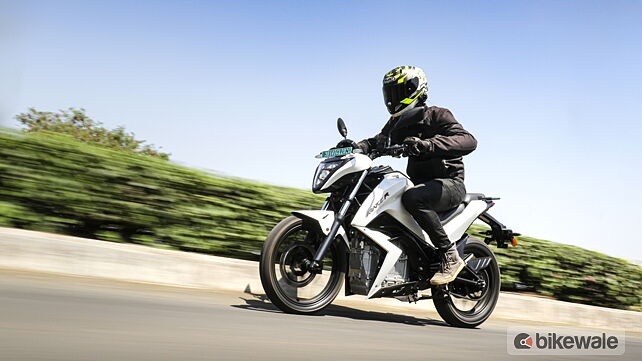







![[object Object] ThumbNail Images [object Object] ThumbNail Images](https://imgd.aeplcdn.com/642x361/n/cw/ec/112955/tork-kratos-pillion-seat54.jpeg?isig=0&wm=2&q=80)
![[object Object] ThumbNail Images [object Object] ThumbNail Images](https://imgd.aeplcdn.com/642x361/n/cw/ec/112955/tork-kratos-drive-chain-and-sprocket64.jpeg?isig=0&wm=2&q=80)
![[object Object] ThumbNail Images [object Object] ThumbNail Images](https://imgd.aeplcdn.com/642x361/n/cw/ec/112955/tork-kratos-left-side-multifunction-switchgear79.jpeg?isig=0&wm=2&q=80)
![[object Object] ThumbNail Images [object Object] ThumbNail Images](https://imgd.aeplcdn.com/642x361/n/cw/ec/112955/tork-kratos-right-side-view50.jpeg?isig=0&wm=2&q=80)
![[object Object] ThumbNail Images [object Object] ThumbNail Images](https://imgd.aeplcdn.com/642x361/n/cw/ec/112955/tork-kratos-left-side-view48.jpeg?isig=0&wm=2&q=80)
